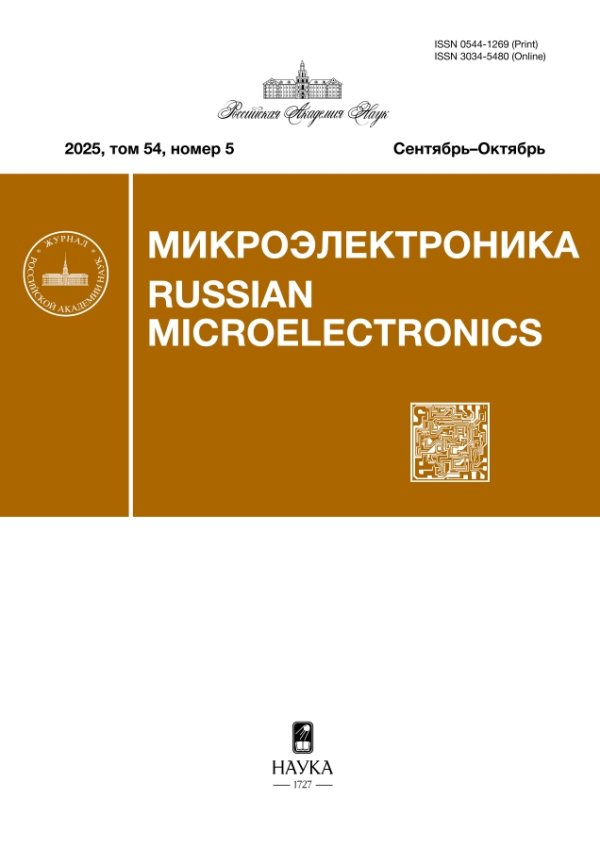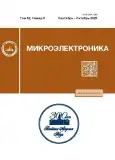Моделирование влияния решеточных дефектов на работу разделения соединенных материалов
- Авторы: Махвиладзе Т.М.1, Сарычев М.Е.1
-
Учреждения:
- Физико-технологический институт имени К.А. Валиева РАН НИЦ “Курчатовский институт”
- Выпуск: Том 52, № 5 (2023)
- Страницы: 367-373
- Раздел: МОДЕЛИРОВАНИЕ
- URL: https://journals.rcsi.science/0544-1269/article/view/138560
- DOI: https://doi.org/10.31857/S0544126923700527
- EDN: https://elibrary.ru/SNZQAF
- ID: 138560
Цитировать
Полный текст
Аннотация
С целью исследования прочностной надежности межсоединений развита обобщенная модель для количественной оценки влияния неравновесных точечных кристаллических дефектов на величину работы обратимого разделения соединенных материалов по границе (интерфейсу) их соединения, обобщающая подход, предложенный ранее авторами к описанию механизма адсорбции дефектов в интерфейсную область. Разработанная модель позволяет не ограничиваться ситуацией, когда дефекты каждого из контактирующих материалов распределяются в границе независимо, по своим подрешеткам, а учитывать также и переходы дефектов между этими подрешетками, что существенно расширяет возможности применения полученных теоретических результатов. Сформулирована соответствующая система уравнений, позволяющая найти и исследовать величину работы обратимого разделения как функцию концентраций дефектов в объемах материалов. В случае, когда дефектами являются атомы примеси внедрения, аналитическими методами детально исследован вопрос о величине критических концентраций примесей, при которых работа обратимого разделения обращается в нуль и соединение материалов становится термодинамически неустойчивым; выяснена роль переходов дефектов между подрешетками, в которых дефекты локализуются в интерфейсе. Выполнены оценки концентраций примеси, при которых может реализоваться эффект неустойчивости интерфейса, существенным образом влияя на характеристики надежности межсоединений.
Ключевые слова
Об авторах
Т. М. Махвиладзе
Физико-технологический институт имени К.А. Валиева РАН НИЦ“Курчатовский институт”
Email: sarych@yandex.ru
Россия, 117218, Москва, Нахимовский проспект, 36/1
М. Е. Сарычев
Физико-технологический институт имени К.А. Валиева РАН НИЦ“Курчатовский институт”
Автор, ответственный за переписку.
Email: sarych@yandex.ru
Россия, 117218, Москва, Нахимовский проспект, 36/1
Список литературы
- Кинлок Э. Адгезия и адгезивы: наука и технология. М.: Мир, 1997. 441 с.
- Гольдштейн Р.В., Махвиладзе Т.М., Сарычев М.Е. Влияние точечных дефектов на трещиностойкость границы соединенных материалов // Физическая мезомеханика. 2018. Т. 21. № 2. С. 14–20.
- Гольдштейн Р.В., Махвиладзе Т.М., Сарычев М.Е. Влияние примесей на работу отрыва по границе соединенных материалов // Поверхность. 2009. № 12. С. 73–78.
- Алексеев А.И., Махвиладзе Т.М., Минушев А.Х., Сарычев М.Е. Термодинамическая модель влияния атомарных примесей на адгезионную прочность интерфейсов // Микроэлектроника. 2011. Т. 40. № 5. С. 325–330.
- Гольдштейн Р.В., Сарычев М.Е. О влиянии микродефектов на работу отрыва соединенных материалов // ДАН. 2003. Т. 389. № 6. С. 753–756.
- Гольдштейн Р.В., Махвиладзе Т.М., Сарычев М.Е. Моделирование кинетики адсорбции решеточных дефектов границей соединенных материалов // Поверхность. 2011. № 8. С. 5–11.
- Rice J.R. Hydrogen and interfacial cohesion // Effect of hydrogen on behavior of materials / Ed. A.W. Thompson and I.M.Bernstein. N. Y.: The metallurgical society of AIME, 1976. P. 455–466.
- Хирш Дж., Лоте И. Теория дислокаций. М.: Атомиздат, 1972. 600 с.
- Махвиладзе Т.М., Сарычев М.Е. Влияние точечных дефектов на скорость электромиграции по границе соединенных материалов // Микроэлектроника. 2020. Т. 49. № 6. С. 450–458.
- Бабичев А.П., Бабушкина И.А., Братковский А.М. и др. Физические величины: Справочник. М.: Энергоиздат, 1991. 880 с.
Дополнительные файлы










